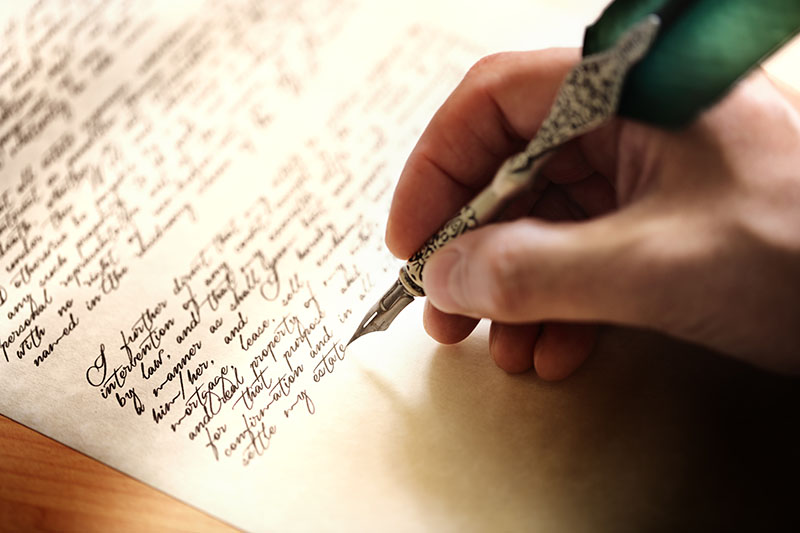4 Techniques for Becoming a Better Writer

Due to the increasing deficit of attention in our culture, many people are opting to read a well-written book summary rather than reading the entire book itself. In fact, book summary websites (e.g. SparkNotes, CliffsNotes, etc.) are what helped many of us to get through college. (Yes, I am one of them … and I’m not proud of it.) Readers, especially nonfiction book readers, want to get right to the point of what they are reading. They usually don’t dedicate time to reading sentences, paragraphs, and chapters that lack purpose and clarity.
Here are four techniques for becoming a better writer through writing more clearly and purposefully.
1: Start with an outline
If you were going to build a house, you would begin with a blueprint. You probably wouldn’t make it up along the way if you wanted people to feel safe inside once the house was built. Likewise, although writers have many different writing styles, effective writing is built according to a blueprint. In writing, the blueprint is known as the outline.
The headings and sub-headings you identify in your outline will serve as the framework for your writing. Once you have constructed the framework, it’s just a matter of filling in the rest.
I rarely read anything that doesn’t have a heading or sub-heading every few paragraphs. I need all the help I can get with reading comprehension! These headings serve as evidence that the author wrote methodically and purposefully—not merely from his or her wandering stream of consciousness.
If you are writing nonfiction, be sure to give a title to each main point in your book’s parts, chapters, and sections by using headings and sub-headings in your writing to guide your readers. If you are writing fiction, use a “bookmap” outline and section headings to guide the reader through the chronology of events in your story.
You also can use the pre-written headings and sub-headings in your outline like a teleprompter to prevent writer’s block.
2: Use “active voice”
Which of the following statements is easier to understand?
- Passive voice: “A new book was written by Sharon.”
- Active voice: “Sharon wrote a new book.”
Generally speaking, active voice will make your writing much clearer. Active voice makes it easier to understand “what is doing what” in each sentence because the subject and verb are easy to identify.
With that said, passive voice—usually used with passive verbs such as is, was, are, etc.—can be useful when 1) you deliberately are trying to be less confrontational with your writing or 2) you are trying to avoid frequent shifts in the main subject of a particular paragraph. Passive voice usually is only a problem when writers don’t use it intentionally. In those cases, the reader is forced to slow down his or her reading to ensure he or she can identify the subject and verb in the sentence. Passive voice makes reading comprehension much more challenging to follow than active voice.
3: Correctly bridge subject-verb clauses
Commas help our readers to identify the subject-verb clauses (combinations) in our sentences. In other words, they help our readers to understand “what is doing what” in each sentence.
At times, you will have two or more sets of subject-verb clauses in your sentences, which can make sentences difficult to read. However, there are a few “bridges” that can help you guide your reader seamlessly from one subject-verb clause to the next. Below are three of these “bridges” and how they are used in a sentence. (Note: The subject-verb clauses are underlined and each “bridge” is designated in bold.)
Bridge #1: Comma plus coordinating conjunction (e.g. for, and, nor, but, or, yet, so)
- Example: “Authors write books, and they hope people will read them.”
- Neither of the two subject-verb clauses are dependent on each other.
Bridge #2: Subordinating word (e.g. while, because, as, etc.)
- Example: “Authors hope that people will read their books.”
- The subject-verb clause following the subordinating word is “subordinating” because its meaning is dependent on the other subject-verb clause.
Bridge #3: Semicolon
- Example: “Authors write books; they hope people will read them.”
- Neither of the two subject-verb clauses are dependent on each other.
4: Correctly set apart appositive, nonessential, and essential phrases
There are several types of phrases that may be necessary to your sentence but, at the same time, can make it more difficult for your readers to identify the subject-verb clause(s) in your sentences. Here are three of the main ones:
Appositive word or phrase
- Example: “Authors, those who write with authority, write books that can help people.”
- An appositive word or phrase renames the subject and is interchangeable with the subject.
- Appositive words or phrases begin and end with a comma.
Nonessential phrase
- Example: “Authors, which are important to society, write books that can help people.”
- The phrase is “nonessential” because the phrase is nonessential to the identity of the subject. The identity of the subject would not change without the nonessential phrase.
- Nonessential phrases begin and end with a comma.
Essential phrase
- Example: “Authors who are important to society write books that can help people.”
- The phrase is “essential” because the phrase is essential to the identity of the subject. The identity of the subject would not be clear if the essential phrase was missing.
- Unlike the appositive word or phrase, the essential phrase is not interchangeable with the subject.
- No commas are used for identifying essential phrases.
In conclusion, the Golden Rule of writing is to put yourself in the place of your reader. Write to be understood. Write to make an impact.
